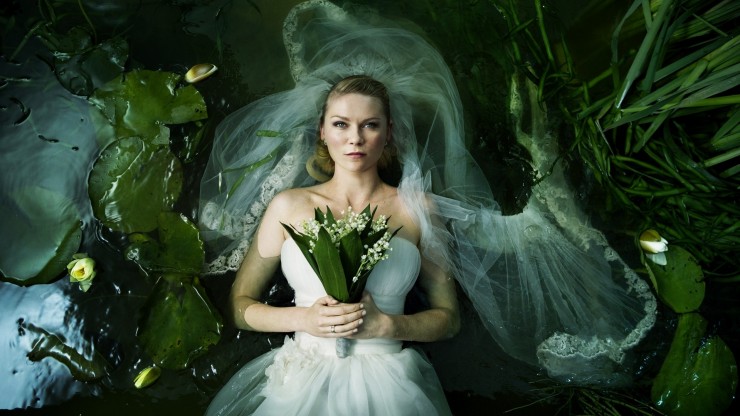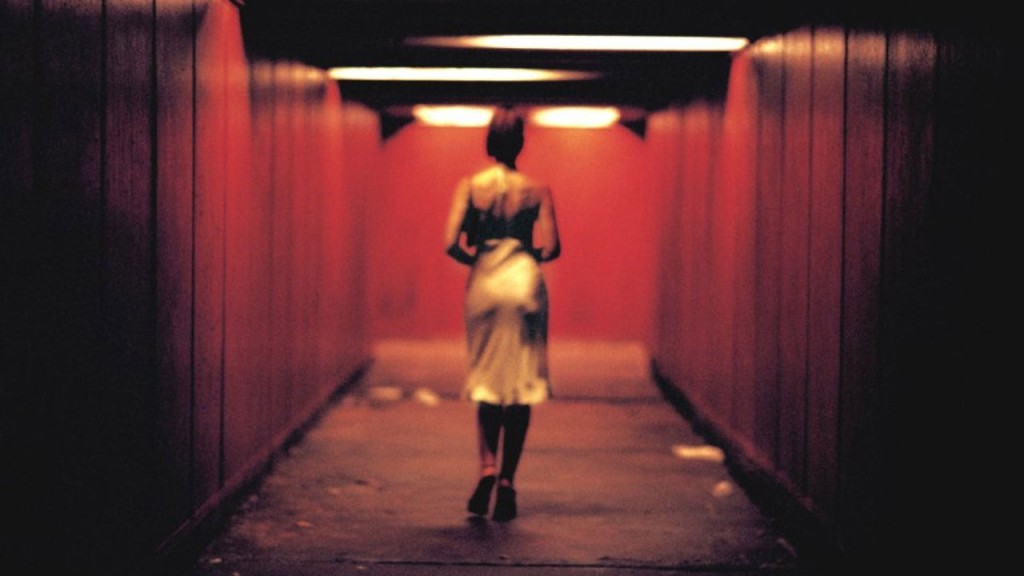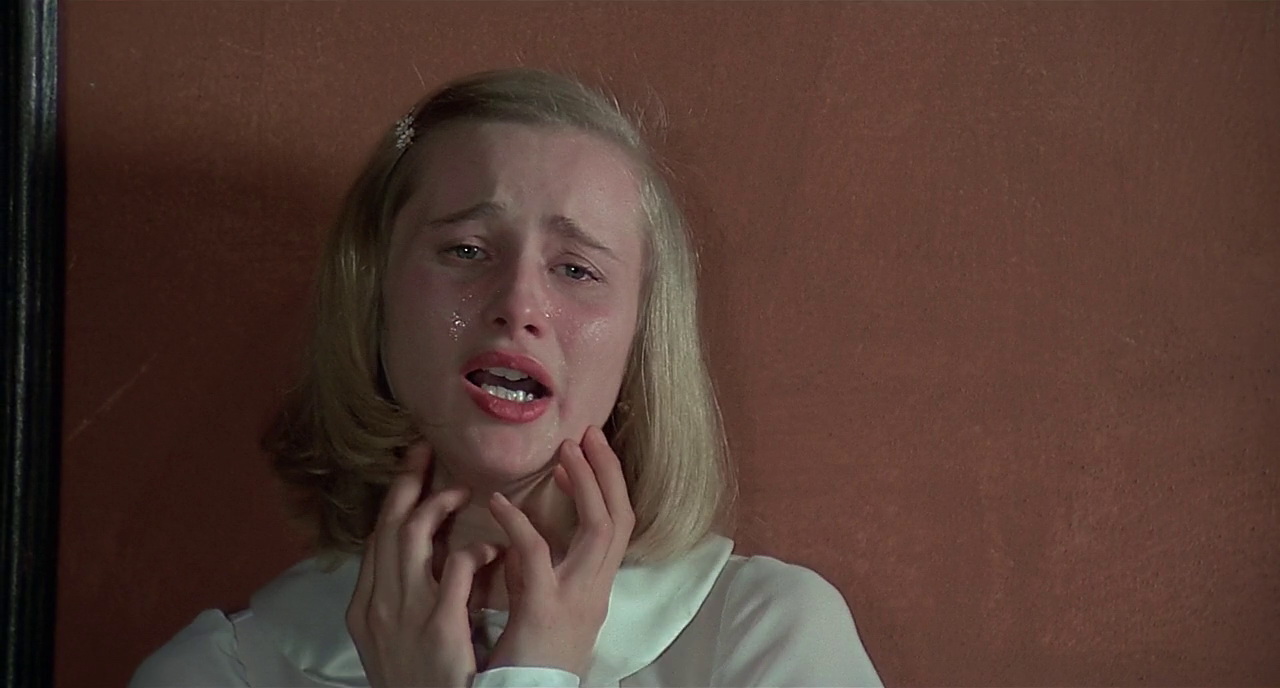5. Under The Skin

Under the Skin seems to be the type of film you either get or you don’t. Though never explicitly communicated, it is implied that the main woman character is an alien disguised as a human who satiates her bizarre needs by luring young men to their demise. Like any great work of art, it is a beautiful thing to behold with amazing visuals and disturbing interpretations. It is this commitment to the singular vision which makes it so overwhelming and uncompromising in its accessibility.
Viewers who came expecting a conventional sci-fi film were sorely let down as there isn’t much of a plot or anything cohesive to form a concrete story. For many, this minimalist approach provided too little to work with and felt like a lesson banality.
If nothing else, Under the Skin succeeds triumphantly as a haunting, original, artsy study in alienation. (pun intended)
4. Melancholia

Melancholia’s end of the world scenario is so beautifully executed that it feels more like a succulent, real life experience than simply watching a film. Most viewers praised Kirsten Dunst’s acting and the overall bold feel of the film. It’s a hard film to forget. It’s also an original take on the apocalypse genre and never fails to amaze with its striking imagery.
Ironically, the very things that were praised about the film were also criticized from the acting to the writing, the pace and so on. Detractors of the film saw it as boring, self-important and dispassionate filmmaking.
Like Under the Skin, you either get Melancholia or you don’t.
3. The Tree of Life

There aren’t many films that are as sure of themselves as The Tree of Life is. This can come off as arrogant and pretentious with an undeserving film, but when the film has earned the confidence, it really pays off; such is the case with most Terrence Malick films.
Another Malick hallmark on full display is the clearly, surrendered effort to make itself accessible to the casual filmgoer. The plot of the film comes in a few chapters. These chapters encompass life itself and come together to add insight and attempt to understand the mysterious cycle we all go through.
Those who didn’t like the film used words such as “self absorbed” and “boring” to describe it. Others also noted that the film was too heavy-handed and ambitious to a fault. There is no denying that that the film requires patience, but most would agree that enduring this odyssey is well worth reaping the rewards of the strong emotional final impact the film leaves you with. For those expecting a conventional type of film, they will inevitably be disappointed.
The best way to go into this Palme d’Or winner is to know that it is not a customary flick and requires patience; if this is expected from the start, it may prove to be a better experience for some people.
2. Irreversible

Polarizing in many circles for its extended and disturbing rape scene, Irreversible is a film shot in backwards chronological order, with the first scene shown in the film actually being the ending. It is this stylistic choice that turns out to be the saving grace of the film which elevates it to high art and prevents it from being trashy or exploitative.
When we see the violence in Irreversible our context is disoriented by the lack of chronology. The viewer is then forced to digest this ugly, raw violence without foresight, giving it a claustrophobic feel. Without this disturbance in chronology, the film almost definitely wouldn’t have worked the same way if at all. Not to mention, the camera angles and movements throughout the film were shot strategically in a way to make the viewer uncomfortable and sick.
Despite the fantastic style and camera work of the film many couldn’t get past the rape scene and felt it was just too gratuitous.
1. Salo, or the 120 Days of Sodom

Salo is arguably the most controversial and divisive film that still manages to earn the respect of film scholars, critics and viewers all across the world. While viewing its extremely explicit violence and torture, one might wonder why the film is so lauded to begin with. It’s only once we look a layer deeper that we realize the furious political themes simmering underneath the near impenetrable surface.
Underneath the violent surface of this disturbing film lies one of the most impressive films in history about the use and abuse of power. Taking place in Fascist Italy in 1944, a bunch of wealthy sociopaths abduct several teenagers and subject them to their twisted, perverted desires including coprophagia, and everything else under the sun. The abuse of power by these fascists can be likened to corrupt leaders who use other people merely as pawns and ways to amuse themselves.
A lot of viewers who watch Salo see it as just an exploitative, repugnant, obscene film that goes much too far. Others think it doesn’t work because it contradicts its objections to violence by showing it so gratuitously in the first place.
Even so, Salo has garnered much analysis through the years by film scholars over its sexual violence and sociopolitical themes. Many famous filmmakers have cited Salo as one of their favorite films of all time. These filmmakers include, Michael Haneke, Catherine Breillat, Rainer Werner Fassbinder and Gaspar Noe.
Author Bio: John Cordes is a lifelong cinephile whose taste in film ranges from Pixar films to The New French Extremity, and everything in between. He also loves to read great literature including topics of United States and world history, cultural geography and ideologies, politics, crime, mystery, adventure, and historic geology.